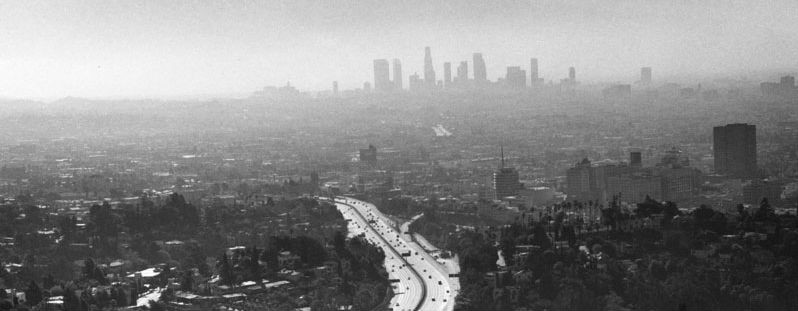 I first saw Evergreen Cemetery in a movie. I was watching Sam Fuller’s 1959 film Crimson Kimono, much of which was shot on location in LA.* There’s a scene where a detective speaks with an elderly Japanese man in a cemetery. It stuck in my mind, and I got on the net to see if I could track the location down.
I first saw Evergreen Cemetery in a movie. I was watching Sam Fuller’s 1959 film Crimson Kimono, much of which was shot on location in LA.* There’s a scene where a detective speaks with an elderly Japanese man in a cemetery. It stuck in my mind, and I got on the net to see if I could track the location down.
It wasn’t hard. There’s a fair amount of information available on Evergreen Cemetery, and the more I learned, the more I wanted to know. It was founded in 1877, and is located in Boyle Heights. Like every cemetery, it serves as a reminder and a record of the past, but it also holds a special place in LA history for a couple of reasons. First, it was unusual because in addition to serving the white community, it also served the African-American, Mexican and Japanese communities. Evergreen is an important reminder of the city’s multicultural heritage. Second, it’s the final resting place of a number of people who shaped not just LA history, but US history. Tombstones belonging to actors, journalists, business leaders, war heroes, musicians, can all be found at this cemetery.
Charlotta Bass, publisher of the California Eagle, an early black-owned newspaper, and vice-presidential candidate for the Progressive Party in 1952 is interred here. So is rancher and farmer Isaac Lankershim, who played a major role in the early development of the San Fernando Valley. You’ll find the grave of Earl Gilmore, who, after taking over his father’s oil company, expanded his business interests in many directions, and created the Farmers Market at Third and Fairfax. The cemetery holds a monument to the 442nd Regimental Combat Unit, made up of Japanese-American soldiers, that served with distinction in World War II. And there is also the Nineteenth Century Chinese Memorial Shrine, which was restored back in the 1990s with the help of the Chinese Historical Society of Southern California.
Not too long ago, I went to visit Evergreen Cemetery with some people I know. There were a few others visitors, but most of the time it seemed like we were alone in this vast graveyard. The patchy grass was green in some places, brown in others. The sun was hot when we weren’t standing in the shade of the large trees. A few graves had fresh flowers on them. Many of them seemed like they hadn’t been touched in years. Aside from the occasional murmur of voices, or the sound of traffic passing on Cesar Chavez Ave., it was very quiet. Very peaceful.
 Below are a few links to sites I visited while researching the cemetery. The first offers a list of some of the people buried at Evergreen, and also provides a timeline. The second, from the KCET web site, gives a vivid and engaging account of the cemetery’s history. Plus it includes lots of cool photos. Last, a fascinating account of the Chinese Memorial Shrine. This story shows how an important piece of LA’s history was almost lost, and also how difficult preserving the past can be.
Below are a few links to sites I visited while researching the cemetery. The first offers a list of some of the people buried at Evergreen, and also provides a timeline. The second, from the KCET web site, gives a vivid and engaging account of the cemetery’s history. Plus it includes lots of cool photos. Last, a fascinating account of the Chinese Memorial Shrine. This story shows how an important piece of LA’s history was almost lost, and also how difficult preserving the past can be.
Nineteenth Century Chinese Memorial Shrine
*
The majority of the location work for Crimson Kimono was shot in Little Tokyo, but Evergreen Cemetery is located in Boyle Heights. If you’re interested in LA history, the film offers extensive views of the city in the fifties, with a focus on the Japanese-American community.



This not what you see movie but film part in port Angeles Washington and you see right next to it